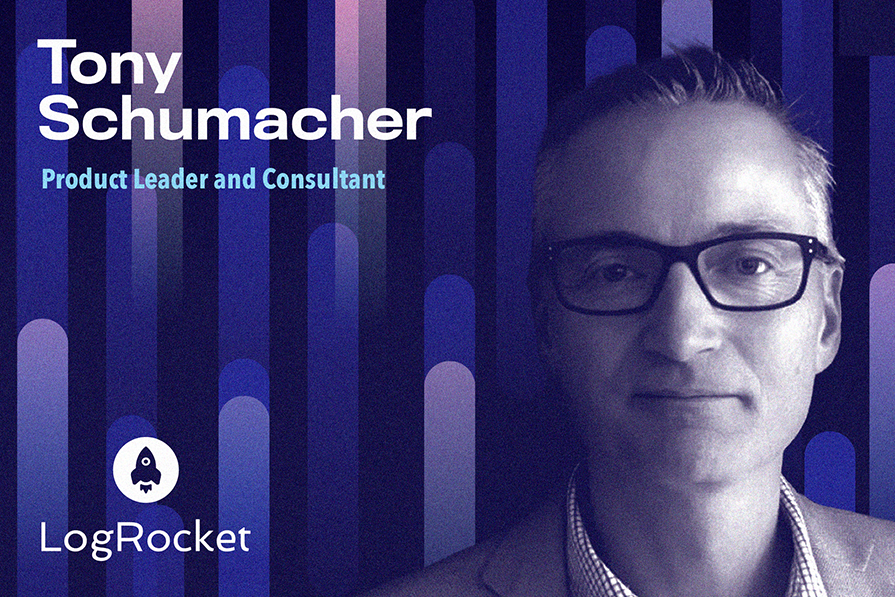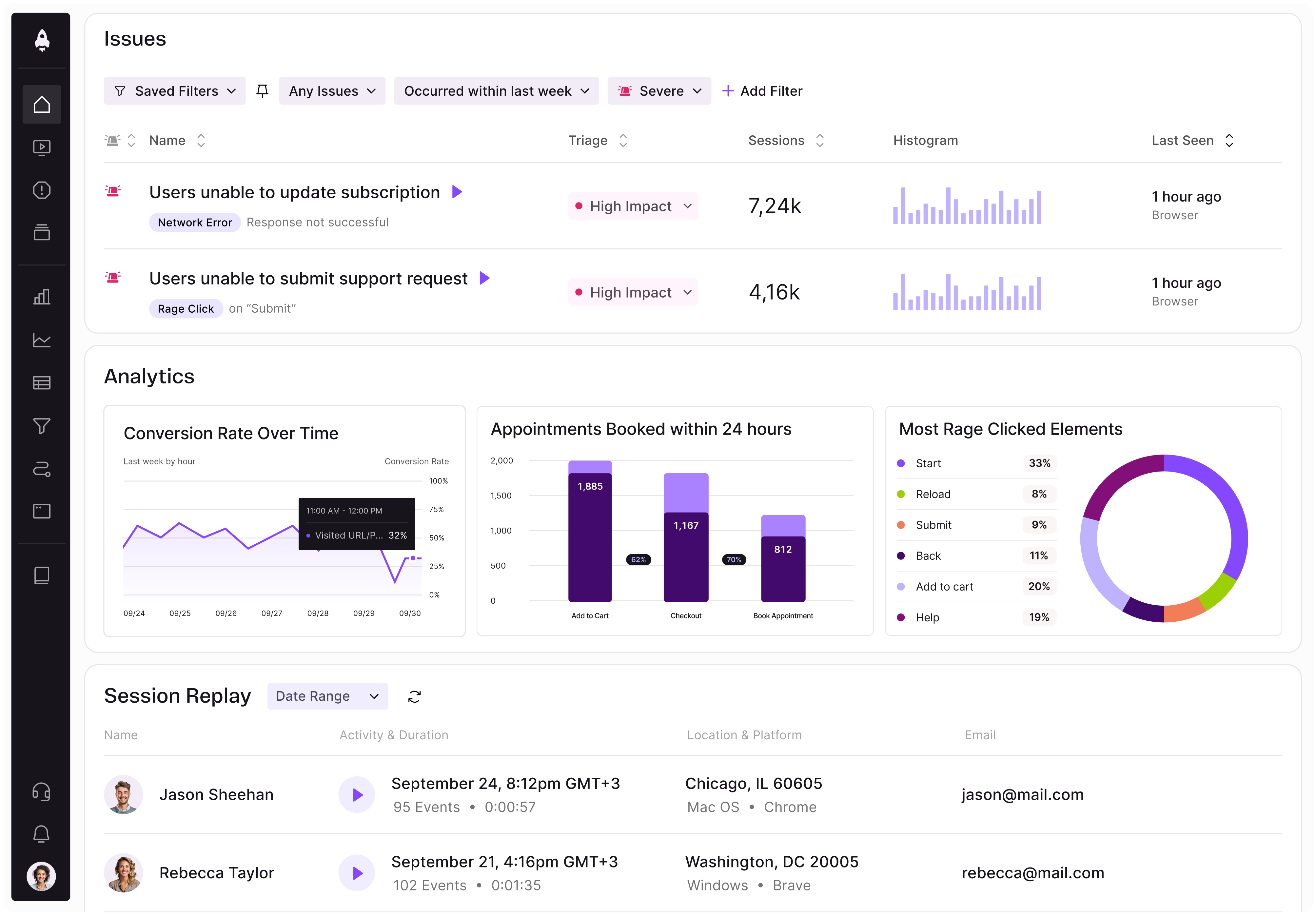Tony Schumacher is a product leader, coach, and consultant. He began his career in software engineering at companies like Daktronics, Norstan Consulting, Connect, and West Group before becoming a senior software architect at Agiliti. From there, Tony joined THQ and advanced to Director of Technology before switching to product. He’s previously worked in various product leadership roles at Cosmi, Cambria, and Datasite.

In our conversation, Tony shares important lessons he learned and has taken with him from working under his former boss and mentor. He talks about how he’s helped change the narrative within a company and gone from being stakeholder-led to product-led. Tony also discusses the nuances of being a platform product manager and how it differs from traditional product management roles.
Yes — his name is Christian Idiodi. When you work with such an impactful and inspiring leader, there’s a lot to take away. The most important lesson I learned under him was how important a strong product culture is.
When Christian brought me on to the team at Datasite, I was able to be an active participant in transforming the product organization. We went from being a sales-led, feature-order-taking organization to a product-led one that collaborated effectively with sales to out-innovate our competitors. It was amazing to see the difference in only a few short years. Through this culture shift, our product became the market leader in the space and, ultimately, our offering expanded to a multi-product platform routinely innovating to take our customers to the next level.
Before working with Christian, I came in thinking only about how I could create great products individually. After working with him and thinking about things from a product leadership standpoint, I started to emphasize creating a culture that supports and grows people within the organization to create those products continually. That value was then woven into the fabric of the organization, and I take that mindset with me everywhere I go.
My time at Datasite is chronicled in Marty Cagan’s latest book Transformed. Christian brought me on after he had been working at the company for a little while. When he started at Datasite, it’s not like the entire organization suddenly said, “We have a new product leader now — let’s change.” The shift to being product-led had to be initiated by Christian and grown from there.
Changing the narrative of those stakeholder relationships took work and time. It was painful and messy at times — it’s tough to put yourself in a position of pushing back in a productive way when things are not the right direction to go. But when we prioritized building both stakeholder and customer relationships in parallel, it was amazing to watch product teams go from following orders to building trust, being empowered, and creating and creating user-informed, outcome- and data-driven products. By the time Christian and I left, sales and product were working in a healthy partnership.
It’s important to mention that Christian couldn’t — and didn’t — do it alone. He needed people in his organization that could deliver once he built the foundation. He focused on hiring people who were driven to understand the customer better than anyone else and wanted to out-innovate the competition. Building a strong team was a huge part of the success, and I’ve carried the importance of that with me.
The last big learning I took was creating an onboarding program for product managers, which Christian initiated. When a new PM comes in, how can we make them effective quickly within our model? Then, he’d continually set the team up to be empowered to deliver with that support — the culture of going out and understanding the customer better than anyone. You’re not going to build much trust if you don’t understand the customer as well as the stakeholders.
When I started working with my most recent consulting client, product was seen as IT — a service organization that took feature orders from business stakeholders. This was compounded by the fact that their technology is not necessarily their product.
Being stakeholder-led, operators ran the business and the technology was bolted on to support the business. The idea was that we built what leadership told us to, and there weren’t any grassroots efforts to change that. I wasn’t hired to provide that transformation, but working in a strong product culture previously motivated me to create it there. There’s no better experience in your product career than being part of a culture that continually creates great products.
I have to give a lot of credit to the VP of Product for having a true product mindset. I wouldn’t have been able to do this without their help and guidance, and once I built trust after joining, we saw the team become more driven by customer discovery and OKRs. We provided strategic context to them so they could find problems within their focus areas, and, guided by OKRs, solve them in a way that works for our business.
I was so happy to see that take hold and begin cross-pollinating across their entire product organization. I feel like we started a movement — our group was a gold standard and that helped show that our organization extends beyond technology and thinks about the long-term business.
When I took over a new focus area, there was a bit of an expectation of what to build. The thought was that we’d just build it and move on, but the first thing I did was ask, “What discovery have we done to say that what we’re going to build is informed by the customer?” It turns out, there really wasn’t any.
That’s when we focused on doing problem domain discovery. Our goal was now to discover what actual problems customers are facing. We were able to uncover some big problems that were different from the ones that they were initially trying to solve. It completely changed how we went about this new endeavor. It seems kind of obvious, but when your work is formed based on user feedback, you’re going to have a much better chance of success than you would just by building what you think is the right thing.
Also, as I was taking on this new endeavor, I knew I had to bring both the product and UX organizations along so we could do this the right way. Some of it was new to our organization, and so it took longer than expected, but that was OK. I wanted our teams to take the right steps, even if we’re doing them more slowly. Then, we’ll eventually build up speed as teams get used to operating that way.
Definitely. I like to think about the key elements of a strong product culture. I believe a strong product culture is built from empowered teams that continually deliver value. They’re consistently guided by strategic context and driven by the relentless pursuit of customers. They also have the relevant business knowledge to make specific guided decisions.
Though there are a lot of things you can drill down to help guide your culture, that’s how I think about creating it from the ground up.
It comes down to how to actually create those empowered teams. How do you set them up so that they feel equipped to go out and do what they need to do to lead their team? So that’s one. Then, how do you give them the strategic context and focus area to feel like they’re not out on an island by themselves? They have a specific area to focus on and become an expert in.
As I was saying earlier about understanding your user more than anyone else, a lot of times this comes down to having a focus area. For example, if you give a team accountability for a specific area of the user journey, they don’t need to be experts across the entire spectrum, which makes it more realistic. Part of setting a team up for success is giving them those areas to narrow in on. From there, continuing to encourage PMs and product teams to get out of the building and understand use cases in real life is crucial too.
I had a technology background first, and it took me a while to figure out that I actually loved product management. Don’t get me wrong — I love technology and innovating, but I also love delivering products to users who are thankful for having something that helps them in their jobs or lives. Moving from platform product management to “traditional” product management meant less thinking about the underlying technology and more time with users and understanding their problems. As a traditional product manager, you trust your engineers and overall team on the technology pieces.
This differs from platform product management. To be clear, there are platform business model products like Spotify, Netflix, Amazon, Uber, etc., but that is not what I’m referring to here. When I think of platform product management, I specifically think about building composable technology platforms used to create a connected product ecosystem (i.e., a multi-product SaaS platform).
There are a couple of approaches to building a multi-product offering. One is that every product team goes out and builds the thing they need in their product, whether it exists in another part of your multi-product offering or not. You might have some loose coupling, but it’s not really tied together cohesively. Or, you can build a composable platform that allows your product ecosystem to be connected and seamless. Product teams then build upon that platform to be able to deliver that customer value quickly. The latter is where platform product managers shine.
As a platform product manager, you are responsible for the technology that you can build products on, as well as some key user-facing core capabilities on top of it (i.e., authentication, user account management). You need to anticipate future user and business needs so the platform capabilities are there when the product teams need to bring an offering to market. I believe a platform product management role is harder than a traditional product management one because you have to understand the technology, trends, users, and the business.
First and foremost is speed to value. The primary purpose of a platform is to be able to have something for product teams to build upon and move quickly. For a mature platform, product teams can potentially bring new offerings to market up to 10X faster than building standalone.
Another is the investment required to scale and grow using what I call “value multipliers.” In my role at Datasite, we went from one product on our platform to five products within just a couple of years. We were able to take over the M&A market by building each of these products on this platform before competitors really knew what happened. It all came down to the ability to achieve 5x value in an investment measured by customer growth through market expansion. Every company measures it differently, but that value multiplier is a key component to whether your platform is successful or not.
The other aspect is stability and consistency, which comes with a customer satisfaction piece. If you build a platform that’s just stitched together and feels inconsistent when you switch from one to another, you’re probably not going to have great customer satisfaction scores. That’s a very important piece too, and it’s often underestimated.
At my most recent consulting engagement, I started on our mobile platform, and we were able to increase our NPS score by 50 points in just a couple of years. One of those factors was ensuring that we had a stable experience, so I like to emphasize that as an important component of success.

LogRocket identifies friction points in the user experience so you can make informed decisions about product and design changes that must happen to hit your goals.
With LogRocket, you can understand the scope of the issues affecting your product and prioritize the changes that need to be made. LogRocket simplifies workflows by allowing Engineering, Product, UX, and Design teams to work from the same data as you, eliminating any confusion about what needs to be done.
Get your teams on the same page — try LogRocket today.

Most teams fail at autonomy. Learn how clear rules help product teams move faster without micromanagement.

A practical framework for PMs to use AI in ideation without sacrificing judgment, strategy, or decision quality.

A practical five minute revenue estimation method to help product managers compare ideas, drop low impact features, and prioritize smarter.

A practical guide for PMs who want to stop being bottlenecks, delegate smarter, and lead teams effectively with a clear ownership framework.